Fisher Wood Stove Papa Bear Review
- October 18, 2023
- 10 comment
After my delightful experience with the Fisher Wood Stove Baby Bear, my curiosity about its “bigger sibling” began to grow. So, when I stumbled upon a second-hand Papa Bear stove for sale, it felt like the universe was giving me a nudge. Taking a trip down memory lane with the Baby Bear and buoyed by its performance, I decided to add the Papa Bear to my collection. Here’s a glimpse into my adventures and discoveries with the iconic Fisher Wood Burning Stove Papa Bear.
Fisher Wood Stove Papa Bear First Impressions
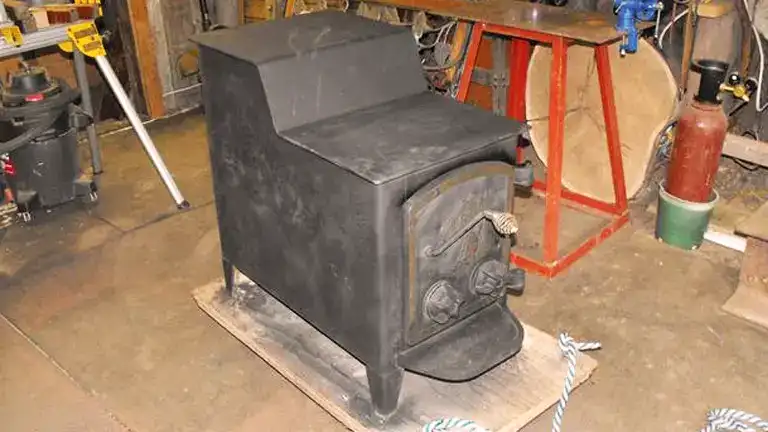
When it arrived, the first thing that struck me about the Papa Bear was its size. With a width of 20″ across the top plate and a depth of 40″ (including the ash fender), this was clearly built to be a formidable heating source. Weighing in at a robust 486 pounds, I could easily comprehend why this piece was named “Papa Bear”. It truly is the king of the Fisher stove lineup.
Fisher Wood Stove History
Diving into its history, the Papa Bear was the first airtight steel plate stove from the Fisher line, birthed in October 1973. Originally created to heat Bob and Carol Fisher’s home, its simple yet powerful design quickly caught the attention of family and neighbors, marking the beginning of its legacy. A fun anecdote to its naming: As Bob recalled, while helping Carol’s cousin Ed move the stove, a casual remark on its weight – “Man, really a bear, ain’t it”? – led to its iconic name, Papa Bear.
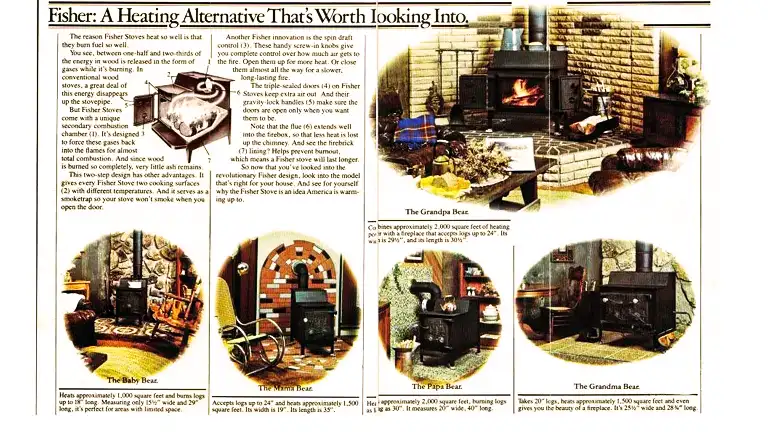
But beyond its rich history, the Papa Bear is also a model of modern efficiency. Much like its smaller counterpart, the Papa Bear resonates with a deep sense of heritage. The iconic “FISHER – STOVE” embossed on its door, coupled with the picturesque Oregon Fir trees, adds an undeniable old-world charm. Yet, this stove isn’t just about aesthetics. Its singular door and dual air intakes provide users, like me, with precise control over the burn rate, ensuring that every log is used to its utmost, maximizing heating efficiency. In essence, the Papa Bear seamlessly combines the allure of the past with the functionalities of the present.
Capacity and Heating Performance
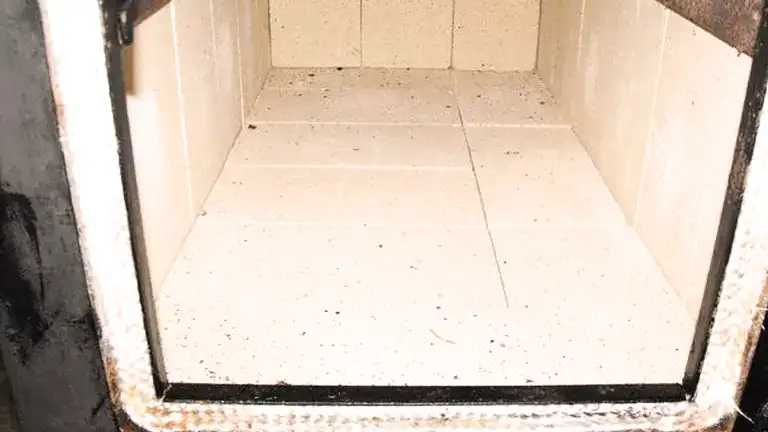
One of the standout features of the Papa Bear is its impressive log capacity. Designed to accommodate logs up to 30 inches, this stove ensures fewer reloads and longer burn times. Its heating range is another commendable aspect. Covering an area between 1750 and 2250 square feet, the Papa Bear is aptly suited for medium to large-sized homes. Drawing from my own experience, once the stove gets going, it radiates a steady and enveloping warmth, ensuring every corner of my living space is comfortably heated. The consistency of the heat output, paired with the stove’s ability to sustain it over extended periods, truly elevates the overall heating experience.
Features & Aesthetics
The Papa Bear that I received came with one door and two air intakes. I found the air intake particularly useful in controlling the burn rate. Visually, the stove brings a sense of nostalgia with the iconic “FISHER – STOVE” embossed on its flat top door and the Oregon Fir trees which add both strength and aesthetics. These Fir trees resonated with me, not just as a design but as a nod to the most common fuel in Oregon. The spring handles and the air intake knob, known as the “draft cap”, are functional improvements that also enhance its rustic charm.
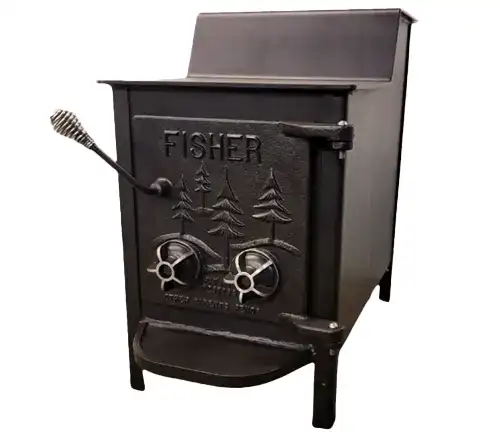
Add-Ons & Customizations
While I love the traditional black box look of the Papa Bear, I learned that it was possible to add brass or nickel-plated doors and the coveted “Bear Feet” for a more refined appearance. These add-ons, especially the “Bear Feet”, certainly piqued my interest.
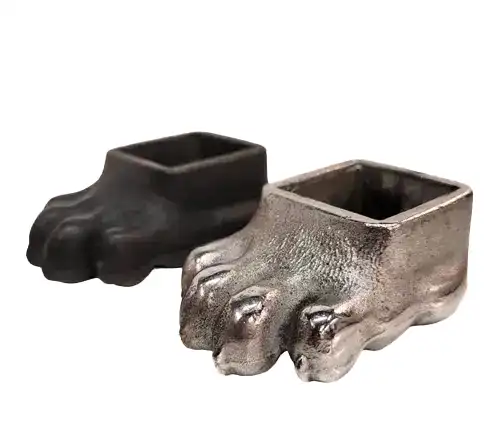
OPERATING INSTRUCTIONS: Living with the Papa Bear
Living with a wood stove, especially a vintage one like the Fisher Papa Bear, is both a joy and a responsibility. To ensure the best performance and safety, it’s crucial to understand the stove’s operation thoroughly. Here’s a comprehensive look at operating the Papa Bear.
- When firing up your Fisher Stove for the first few times, be prepared for a temporary paint odor. This is due to the high-temperature paint used, which might give off a fleeting smell during the initial burn. It’s advisable to ensure adequate ventilation by keeping windows or doors slightly open during this period.
- Begin by using small dry wood pieces, placing them towards the front of the firebox over some paper. Once ignited and the draft has been established, the door can be fully closed. As the fire catches, introduce larger wood chunks until you’ve got a steady bed of coals. The burning rate is then controlled via the draft caps. But remember, while the Fisher Baby Bear wood stove, Fisher Mama Bear wood stove, and Fisher Papa Bear wood stove are radiant heaters designed to operate with closed doors, to mitigate creosote accumulation, you can operate with the door open for short 20-30 minute bursts, not more than twice a day.
- All combustion appliances require air. It’s vital to ensure the stove gets enough fresh air, especially if you have other fireplaces in use, to prevent a downdraft in your Fisher Stove.
- While the Papa Bear is adept at burning, using wet or green fuel isn’t recommended. Not only do they produce more creosote, but they also reduce the efficiency of the burn.
- If you notice the stove’s body or the chimney connector glowing, it’s a sign of overfiring. Immediately stop adding fuel and close the draft controls until the glow subsides. Remember, safety comes first!
- If you’ve been operating the stove with the door closed and need to inspect the fire, open the draft slightly first. After a brief pause, open it fully. This simple technique ensures the chimney’s draw isn’t overpowered when you open the door.
- To get the best out of your Fisher Stove, maintain a good bed of coals. While it’s essential to clean out ashes, remember that a wood fire typically performs optimally with an inch or so of ash at its base.
Understanding and following these operating instructions ensures that your Papa Bear stove not only serves as a heating solution but also stands as a testament to safety and care in your home. Whether you’re a first-time wood stove user or a seasoned enthusiast, taking a moment to familiarize yourself with these guidelines guarantees warm and safe winters ahead.
Restoring My Fisher Papa Bear: A Weekend Project
Last weekend, I decided it was high time I gave some TLC to my Fisher Papa Bear wood stove, which I believe has its roots back in the 1980s. It’s been a staple in my home, but time has left its mark in the form of rust patches dotting its steel exterior. I rolled up my sleeves, eager to breathe new life into this old beauty.
For the rust removal, I armed myself with my ever-reliable Ryobi 18v angle grinder. With a wire wheel attachment in tow, it felt like I was wielding Excalibur, cutting through the rust with surprising ease. In the midst of this restoration, my surroundings drew my attention. The anticipation of the soon-to-be-installed bathroom enclosure and the freshly placed 3/4 inch plywood for the upcoming 300-gallon water tank setup filled the air.

Once I was satisfied with the rust removal, I was on to the next step. Drawing from my previous foray into car restorations, I chose the 2,000-degree ceramic paint, reminiscent of the one I used on my cherished El Camino’s Hooker Headers. Armed with Krylon high-heat paint, I began the application. The paint, designed with automotive headers in mind, glided on effortlessly, settling into a beautiful, flat black finish.
As I stood back, admiring the freshly painted stove, the day’s warm 62-degree temperature hinted it was perfect for this restoration task. Once the paint fully sets, the next stage awaits: Igniting a small fire to ensure it cures perfectly.
Reflecting on the day, I realized that while the Fisher Papa Bear might be an old stove, it’s not just about heating. It’s a testament to timeless design and durability. Now, with its new finish, it’s ready to warm my home for many more years.
Fisher Wood Burning Stove Efficiency and Safety
One of the primary reasons I was drawn to the Papa Bear was its remarkable efficiency. When it comes to wood stoves, there’s a delicate balance to strike between size, heat output, and fuel consumption. The Papa Bear, as a member of the illustrious Bear Series, nails this balance. Its design, featuring a sizable firebox coupled with a modest 6-inch outlet, ensures maximum heat retention and dispersion. This means you get more warmth for every log you burn, making those cold winter nights all the more cozy.

But it’s not just about efficiency; safety has always been paramount for Fisher. In the evolving world of wood stoves, where many manufacturers have come and gone, Fisher has remained a beacon of reliability. They were pioneers in safety testing and trailblazing standards that were later embraced by institutions like the Underwriter Laboratory. This commitment to safety means that while the Papa Bear keeps you warm, it also offers peace of mind. Knowing that the stove is built not just for performance but also with the well-being of its users in mind, adds an immeasurable layer of comfort.
In essence, with the Papa Bear, you’re not just getting a wood stove; you’re investing in a legacy of efficiency and safety that Fisher has meticulously crafted over the years. And in my personal experience, it’s an investment well worth it.
Fisher Wood Stove Papa Bear Pros and Cons
Pros of the Fisher Wood Stove Papa Bear:
- Designed with a 6-inch outlet, it optimizes the burn rate, ensuring that you get the most heat out of every log.
- Can accommodate logs up to 30 inches, reducing the frequency of reloads.
- Capable of heating a substantial area, ranging from 1750 – 2250 square feet.
- As the first model in the Fisher line, it boasts a legacy of durability and effectiveness.
- Pioneered safety testing standards that later became industry benchmarks.
- Options for aesthetic upgrades like brass or nickel-plated doors and the signature “Bear Feet”.
Cons of the Fisher Wood Stove Papa Bear:
- Weighing in at 486 pounds, it can be challenging to move and might require professional installation.
- Due to its large dimensions, it might not be suitable for smaller rooms or spaces.
- Being a stove from the 1970s, it might lack some of the modern features or efficiencies of newer models.
- Given its age, it might not align with the latest EPA emission standards.
- Larger stoves can sometimes require more maintenance and frequent cleanings to operate optimally.
Brick Installation
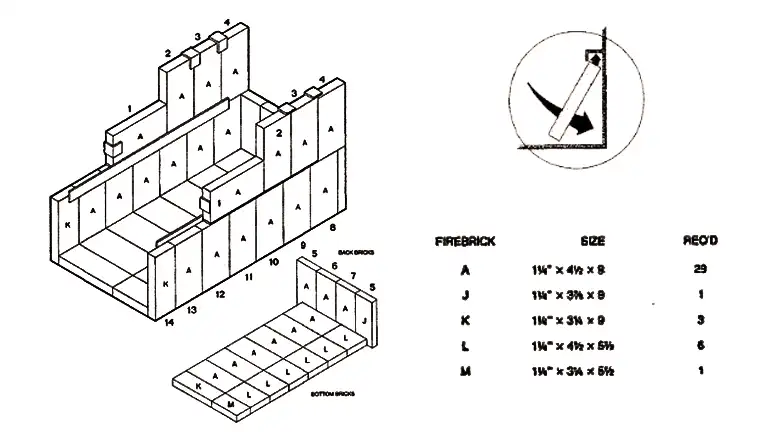
Conclusion
From its rich history to its modern-day efficiency, the Fisher Wood Stove Papa Bear truly stands out. It’s not just a stove; it’s a piece of history, a conversation starter, and most importantly, a reliable source of warmth for the home. If you’re considering a wood stove, the Papa Bear is certainly worth a look. But don’t just take my word for it, try it out for yourself, and if you have any experiences with the Papa Bear or any other wood stove, please share your thoughts and comments below!
If you are Interested in Buying Papa Bear Check it out Here!
Related Article :
FAQs
- How does the Papa Bear compare to its siblings in the Fisher series?
The Papa Bear is the original and largest model, designed to handle logs up to 30 inches and heat areas ranging from 1750 – 2250 square feet. - Is the Papa Bear suitable for modern homes, given its origin in the 1970s?
Absolutely. While the design originates from the 1970s, its efficiency and heat output make it compatible with modern homes. Moreover, its vintage appeal adds a unique touch to contemporary interiors. - Why does the Papa Bear have two air intakes?
The two air intakes allow for better control over the burn rate, maximizing the stove’s efficiency and helping distribute heat evenly. - What maintenance steps are required to keep the Papa Bear in optimal condition?
Regular cleaning of the stove, ensuring the air intake is clear, and checking for any signs of wear or damage are essential. Also, it’s advisable to get the chimney cleaned annually. - I’ve heard the Papa Bear is quite heavy. Is it challenging to install?
Weighing in at 486 pounds, the Papa Bear is substantial. However, with proper planning and a few helping hands, the installation process is straightforward. - How does Papa Bear’s price back in the 1970s translate to today’s market?
The Papa Bear was priced at $325 in December 1974. Adjusting for inflation, that would be higher today. However, its value also depends on factors like condition, rarity, and demand among vintage stove enthusiasts. - Does the Papa Bear meet modern emission standards?
The Papa Bear was designed before the introduction of many of today’s stringent emission standards. However, it was one of the pioneers in safety testing that later became standardized. - Is the Papa Bear suitable for larger homes or smaller ones?
With its capacity to heat areas up to 2250 square feet, the Papa Bear is more suited for medium to larger homes, ensuring every corner stays warm during colder months. - What makes the Fisher Papa Bear stand out from other wood stoves in its era?
Apart from its efficient heating capacity, the historical context, pioneering safety testing, and iconic design make the Papa Bear a standout in the wood stove realm. - How does the Papa Bear compare to the Baby Bear in terms of heating capacity and size?
The Papa Bear is the largest stove in the Fisher Bear Series, designed to heat spaces up to 2250 square feet, whereas the Baby Bear is crafted for smaller spaces, heating up to 1250 square feet. The Papa Bear can accommodate logs up to 30 inches, making it ideal for those who need a more substantial heat source. In contrast, the Baby Bear, being the more compact model, is suited for smaller rooms and takes logs up to 18 inches. Both offer exceptional quality and performance, but the choice between them primarily depends on the size of the space you’re looking to heat.

David Murray
Forestry AuthorI'm David Murry, a forestry equipment specialist with a focus on chainsaw operation. With over 13 years of experience, I've honed my skills in operating and maintaining a wide range of machinery, from chainsaws to log splitters. My passion for the outdoors and commitment to sustainable forestry drive my work, which emphasizes safety, efficiency, and staying updated with industry advancements. Additionally, I'm dedicated to sharing my expertise and promoting environmental awareness within the forestry community.
10 comments
I am looking for a set of 4 of the fisher wood stove paws. If anyone has a set for sale. Thanks
Todd Painter
March 1, 2024 11:06 pmI’ve been using the papa bear for 8 years. It was given to us by a friend who was coming out to visit from Oregon. We live in Montana their loss our gain. I recently found a used momma bear nearby for $150.00 too good to pass up. I’ll keep it in reserve for the time being. Great article btw
Alan
January 13, 2024 5:59 amthank you this was the best write up!
h bird wright
December 17, 2023 11:17 pmHave been using papa bear since 1978. Wonderful stove. Should bricks be replaced
Rowland
December 1, 2023 1:19 pmI took my papa bear fisher and cut the bottom and added a ash pan with a separate door off of another furnace I also put a complete outer shell around the stove and a blower in the back so I could put duct s and pipe the heat all over the house
Arnold Stafford aToyota1943@gmail.com
October 31, 2023 9:35 pmI've had a fisher stove since 1977 and i still use it, not so much now as i had a heat pump installed. However, heat pumps don't work when the power is out for days so i kept it as an emergency backup and to feel the warmth of a wood fire when it's 15degrees outside and the heat pump is struggli g.
Larry
October 19, 2023 4:34 amI made many of these papa bear stoves back in the 70s and 80s for friends and relatives using 3/16 " plate when working at lake shore Inc. In Marquette mi. Always with scrap plate and permission on my own time and off the clock
Mark Tallio
October 18, 2023 11:49 amPrice on the papa bear??



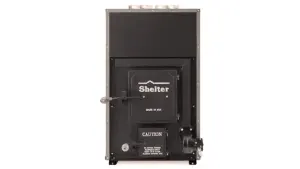
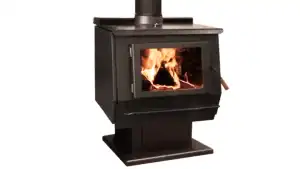
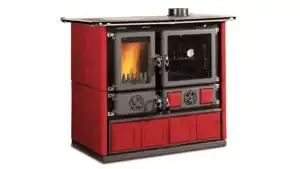
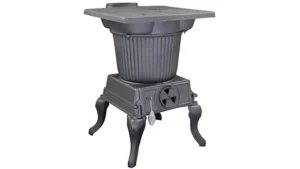
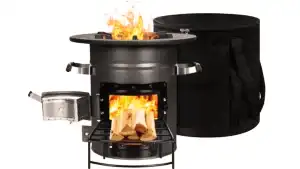
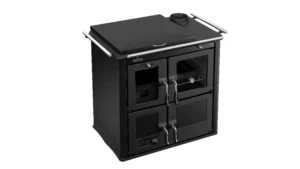
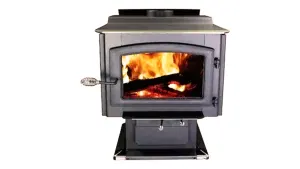
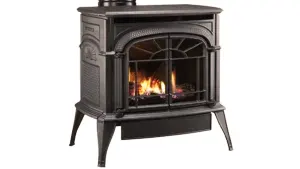
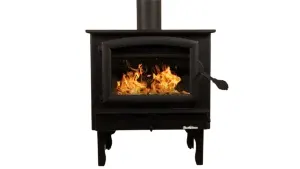

Looking for those bear paw feet to complete the restoration of my Fisher Papa Bear stove…..if anyone has a set laying around? Shoot me a e-mail. We use our Papa Bear daily to heat our cabin… we burn Cedar and Logpole pine during the day and put on a couple of pieces of Oak at night to hold the coals till morning. Great stove!!!!
Brian Yankie
November 12, 2024 6:17 pmLove your setup with cedar, pine, and oak—perfect for all-day warmth! Hope you find those bear paw feet soon; they’d make a great finishing touch!
David Murray
November 14, 2024 12:54 am